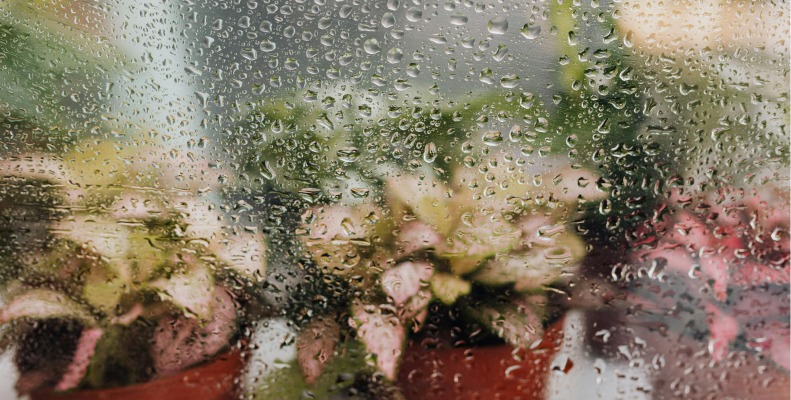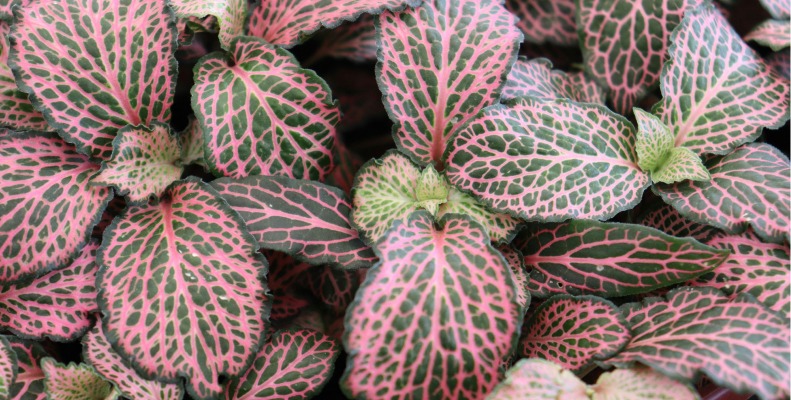Welcome to our guide on exotic angel plant care! Exotic Angel® Plants features over 300 plant types. Each plant needs special care. If you’re new to plants or a seasoned pro, knowing how to make your plants thrive is key.
Exotic Angel Plants, or Fittonia’s, come from Hermann Engelmann Greenhouses, now owned by Costa Farms. They offer around 400 plants, all known for their lush beauty. These plants are loved by people who enjoy growing plants all over the world. As a registered trademark, the name Exotic Angel® Plants enjoys legal protection.
For your exotic angel plants to do well, you must think about many things. This includes the light they need, the right temperature, and how much humidity. You also need to water them correctly, feed them, and take care of them. With just a little know-how and love, your plants will be very happy.
Key Takeaways:
- Exotic Angel Plants offers over 300 plant varieties, each with specific care requirements.
- Exotic Angel Plants are renowned for their high-quality and lusher plants.
- Consider factors such as light, temperature, humidity, watering, fertilization, and maintenance for successful exotic angel plant care.
- Regular pruning and addressing common issues promptly are essential for optimal growth.
- With the right care, you can enjoy the beauty and charm of exotic angel plants in your indoor or outdoor space.
Understanding Exotic Angel Plants
Exotic Angel Plants are from Hermann Engelmann Greenhouses, Inc. They are now with Costa Farms. They offer about 400 plant types. These plants are known for quality and are grown carefully in their greenhouses.
They make plants full and lush by using many cuttings. This brings out beautiful leaves and colors. Each kind of plant needs different care. But there are tips that help most tropical plants grow well.
For new or skilled gardeners, Exotic Angel Plants add beauty indoors or out.

Growing an Exotic Angel Plant Collection
You can collect diverse plants with Exotic Angel. From the bright Polka Dot Plant to the unique Monstera deliciosa, there’s much to enjoy.
It’s key to know what each plant needs. Some like light, others don’t. Some need more humidity, while others are fine with less.
The secret to a great Exotic Angel Plants collection is knowing each plant’s needs. With the right light, water, and care, they will flourish.
Caring for Your Exotic Angel Plants
To keep your Exotic Angel Plants healthy, follow these care tips:
- Light: They do best in bright, indirect light. Window light is good, but not direct sun.
- Temperature and Humidity: They like warmth and humidity. Keep temps between 60-85°F. Adding moisture to the air can help.
- Watering and Moisture: Let the top inch of soil dry before watering. Don’t overwater. Adjust as needed for each plant.
- Fertilization: Feed them with balanced plant food in spring and summer. Follow the label’s advice.
- Pruning and Maintenance: Clear the plants of yellow or damaged leaves. Watch for pests and deal with them quickly.
Exotic Angel Plants need consistent care. But they bring exotic beauty to your home. They make your space calm and colorful.
Essential Care Tips for Exotic Angel Plants
Proper care keeps exotic angel plants healthy and beautiful. They need the right light, temperature, and humidity. Also, watch how you water and fertilize them. Remember, they need regular prunings and maintenance too.
Light Requirements
Exotic Angel Plants do well in bright, indirect light. They don’t like direct sunshine. Too much light can burn their leaves. Aim for a spot that gets soft, filtered light.
Temperature and Humidity
These plants love warmth and humidity, like their native lands. Keep their home between 60°F to 80°F. Stay away from cold drafts. For extra humidity, try a humidifier or a tray of water and pebbles.
Watering and Moisture
Water them right to keep them healthy. Wait until the soil’s top layer feels dry before watering again. Never let them sit in water. Too much water can kill them, but so can too little.

Fertilization
They need food to stay lush and green. Feed them every 2 to 4 weeks in spring and summer. Use fertilizer made for houseplants. Don’t overdo it, as too much can harm them.
Pruning and Maintenance
Taking care of your plants is important. Trim off any yellow or hurt leaves. This keeps diseases and pests away. Wiping the leaves clean helps them take in light and food better.
Stick to these tips for healthy, happy plants. Keep in mind, each type of Exotic Angel Plant may need a little different care. Enjoy the beauty they add to your home.
Troubleshooting Common Issues
Exotic angel plants are beautiful and tough, but they may face some problems. Knowing how to fix these issues will keep your plants strong and healthy.
Overwatering and Insufficient Light
Exotic angel plants need the right amount of water and light. Too much water can make their stems soft and cause brown spots. Also, their lower leaves might turn yellow. It’s key to let the soil dry a bit between waterings.
Not enough light makes them grow weak and their color fades. So, put your plant where it gets bright but indirect sunlight for best health.
Root Rot
Root rot comes from too much water. Signs are wilting, yellow leaves, and a bad smell. Make sure the plant sits in well-draining soil and don’t water too often.
If you see signs of root rot, remove the bad parts and replant in fresh soil.
Underwatering
To avoid underwatering, check the soil’s moisture often. Water your plant when the top inch of soil feels dry. Always let the water drain well.
Insect Infestations
Aphids and spider mites can harm your plants. They feed on the sap, which can slow growth and change the look of the leaves.
If you see webbing or stickiness on your plant’s leaves, act fast. Use indoor plant insecticides to remove these pests.
| Problem | Symptoms | Solution |
|---|---|---|
| Overwatering | Soft stems, dark-brown spots, yellowing lower leaves | Allow soil to dry out between waterings |
| Insufficient Light | Weak growth, pale foliage | Place in a location with bright, indirect light |
| Root Rot | Wilting, yellowing leaves, foul odor | Repot in well-draining soil, reduce watering |
| Underwatering | Dry, crispy leaves, yellowing all over the plant | Water when top inch of soil is dry |
| Insect Infestations | Webbing, sticky residue on leaves, stunted growth | Use insecticides to eliminate pests |
Winter Care for Exotic Angel Plants
Winter can be a challenging time for Exotic Angel Plants, but with the right care, they can thrive even in the colder months. Here are some essential winter care tips to keep your plants healthy and beautiful during the winter season:
Caring for Exotic Angel Plants during the winter months requires specific adjustments to ensure they continue to thrive despite the cooler temperatures and reduced light levels. Here are detailed tips on how to manage their care through the colder season:
- Light Management:
- Maximize Exposure: As daylight decreases in winter, it’s crucial to maximize light exposure. Place your plants near south-facing windows to catch as much natural light as possible.
- Supplemental Lighting: If natural light is insufficient, consider using grow lights. Position the lights a few inches above the plants and keep them on for about 12-16 hours a day to mimic the longer days of other seasons.
- Temperature Control:
- Consistent Warmth: Maintain indoor temperatures around 60-75°F. Exotic Angel Plants are sensitive to drastic temperature changes.
- Avoid Cold Drafts and Heat Sources: Keep plants away from drafty windows, doors, and exterior walls. Similarly, avoid placing them near radiators or heating vents as the dry heat can be detrimental.
- Humidity Management:
- Increase Humidity: Winter heating often dries out indoor air, which can be challenging for tropical plants. Use a humidifier to maintain indoor humidity levels around 40-60%.
- Pebble Trays: Alternatively, place water-filled pebble trays near or under the plants to help increase the surrounding humidity.
- Group Plants: Grouping plants together can create a microenvironment with higher humidity, benefiting all the plants within the cluster.
- Watering and Feeding:
- Reduced Watering: Water less frequently during winter, allowing the top inch of soil to dry out before watering again. This prevents root rot, as plant metabolism slows down in cooler conditions.
- Pause Fertilizing: Hold off on fertilizing as growth slows during these months. Resume feeding with a balanced fertilizer in early spring to coincide with the start of the active growth period.
- Pest Monitoring:
- Stay Vigilant: Winter can sometimes lead to an increase in indoor plant pests like spider mites, which thrive in warm, dry conditions. Regularly inspect your plants for signs of pests and treat them promptly with appropriate insecticides or natural remedies.
- Clean Leaves: Wipe down the leaves occasionally to remove dust and potential pest eggs. This not only keeps the plants healthy but also improves their ability to absorb light.
- General Maintenance:
- Prune Sparingly: Remove only the dead or dying leaves to help the plant conserve its energy. Extensive pruning should be saved for the growth season.
- Check for Drafts: Periodically check your plant’s location for any drafts that might have become noticeable with the change in weather.
By adjusting care routines to accommodate winter conditions, your Exotic Angel Plants can remain vibrant and healthy throughout the season, ready to burst into lush growth as temperatures rise in the spring.
Conclusion
Taking good care of exotic angel plants is key to their beauty and life. Ensure they get the right light, temperature, and water. Also, check the air moisture and feed them right. Exotic Angel Plants need regular trimming and quick help if bugs come.
Being an angel plant parent is rewarding. Your home or garden will look amazing with their touch. It takes time, but with the right care and some knowledge, you’ll have a wonderful green corner.
Keep an eye on your plants and adjust care where needed. Different Exotic Angel Plants may ask for different things. Always check their care guide. You make the best home for your angel plants to grow strong and lush.

